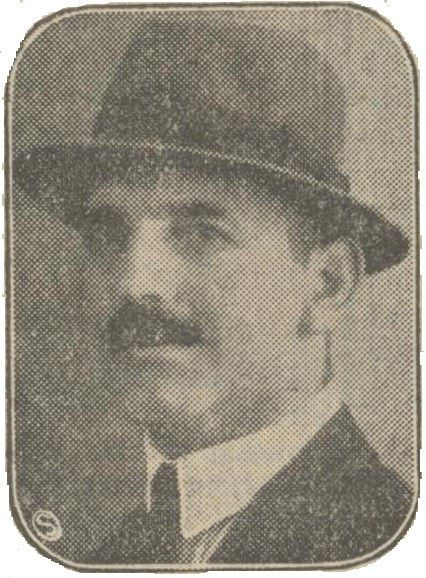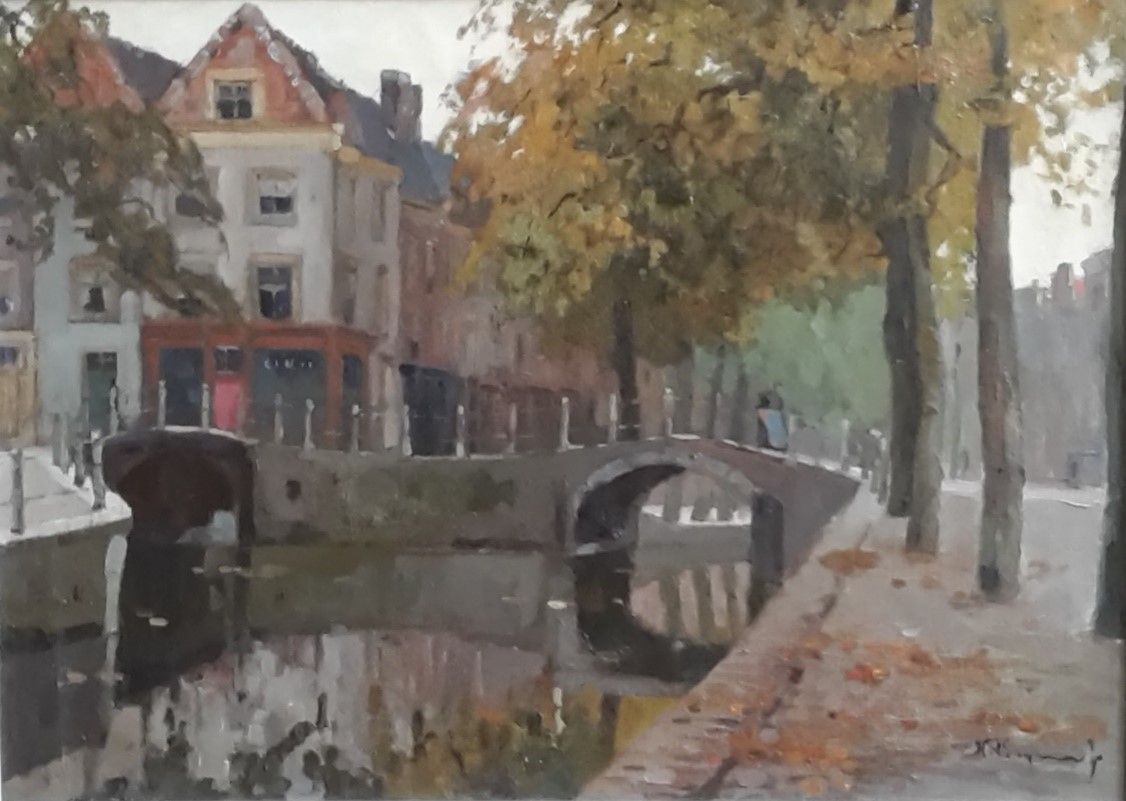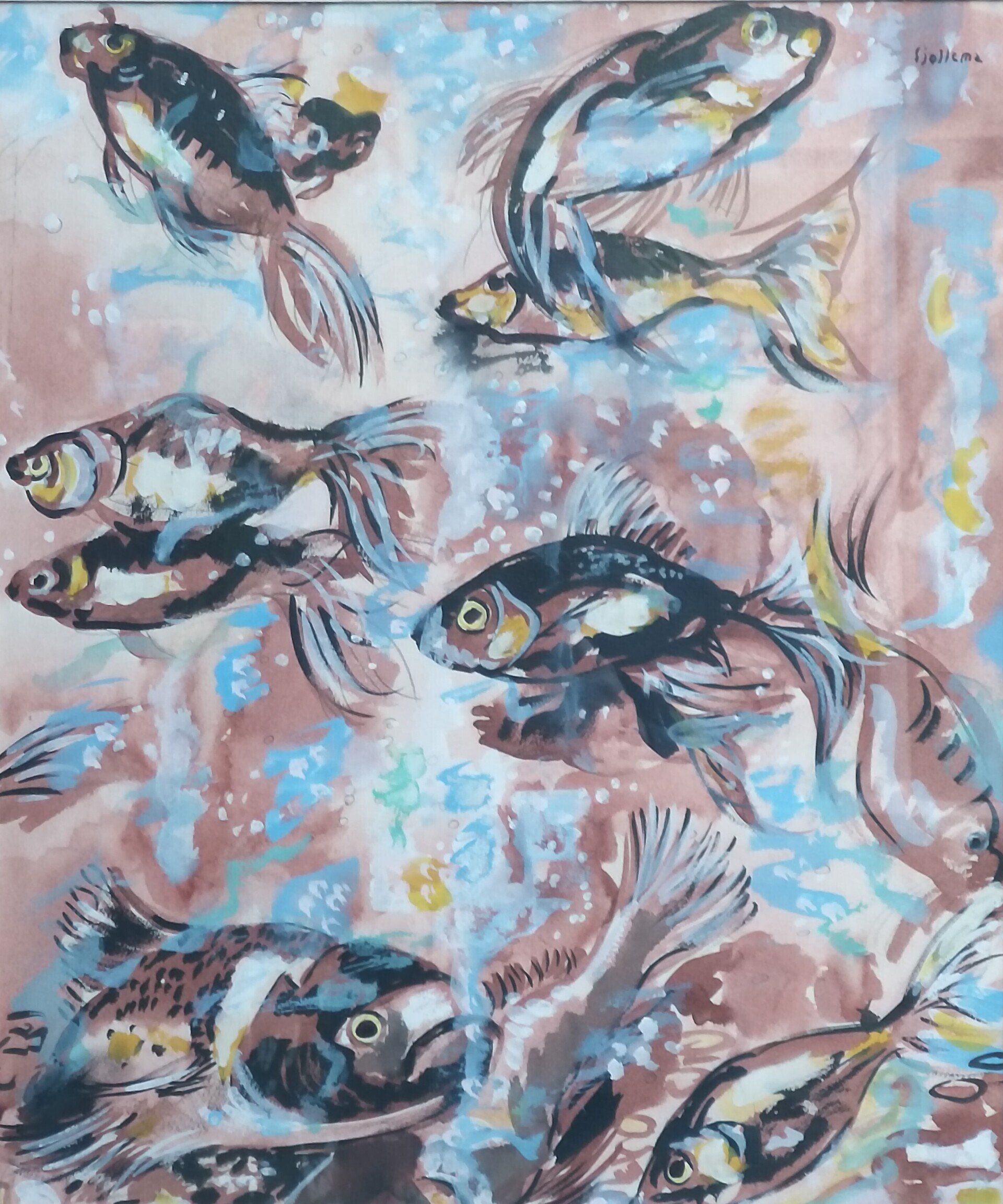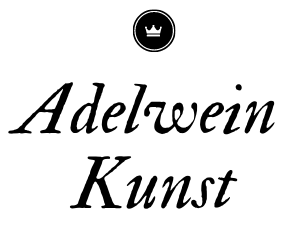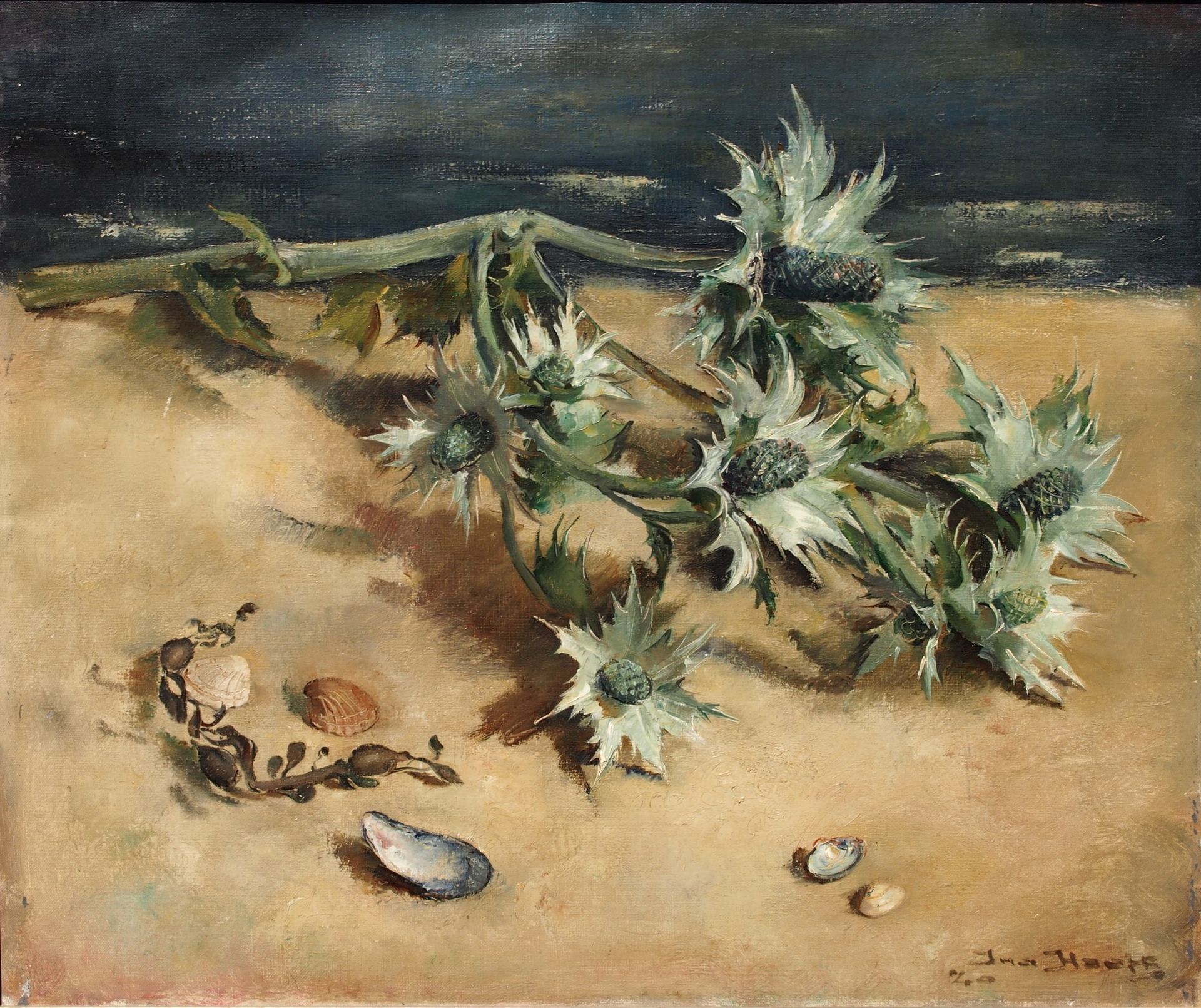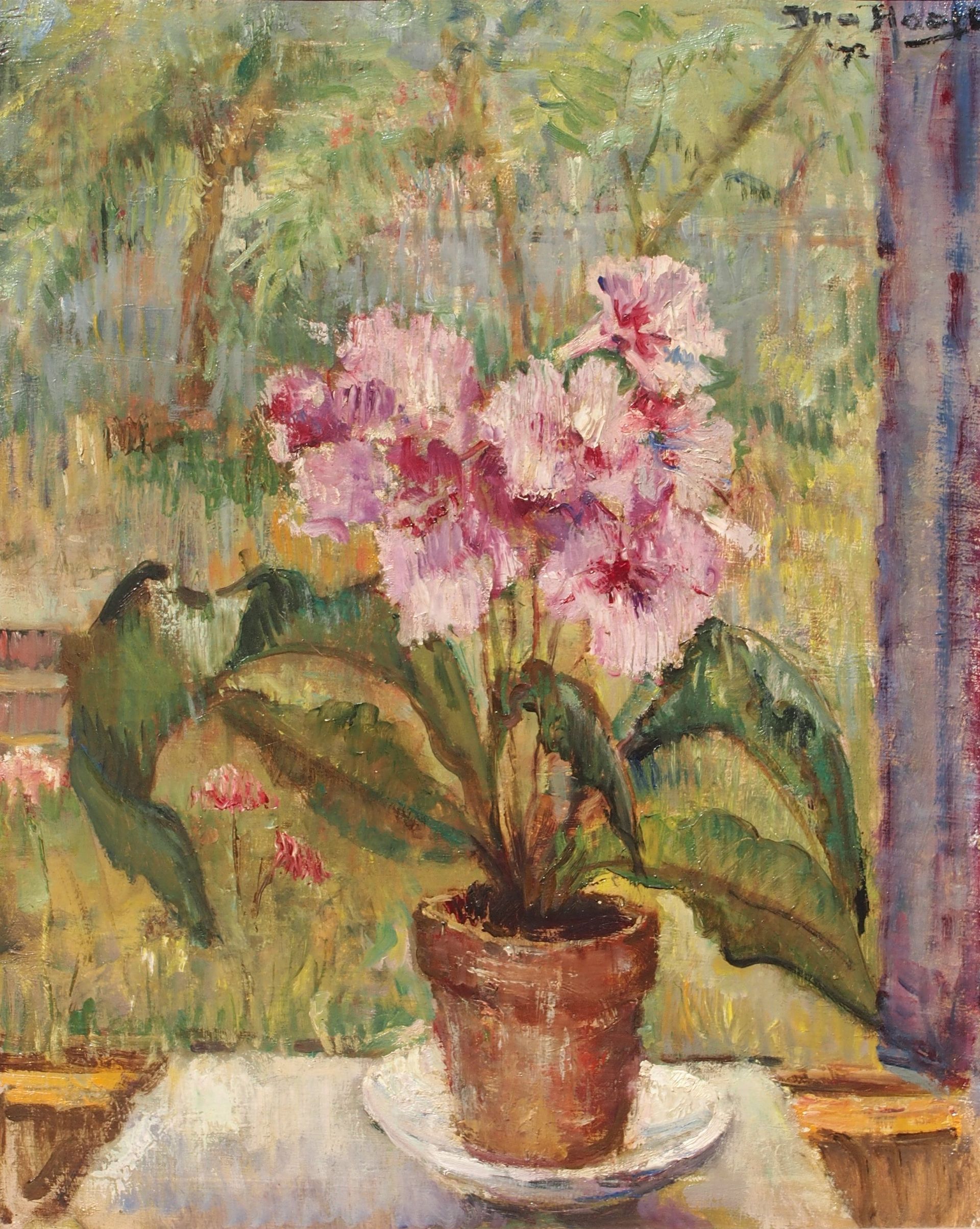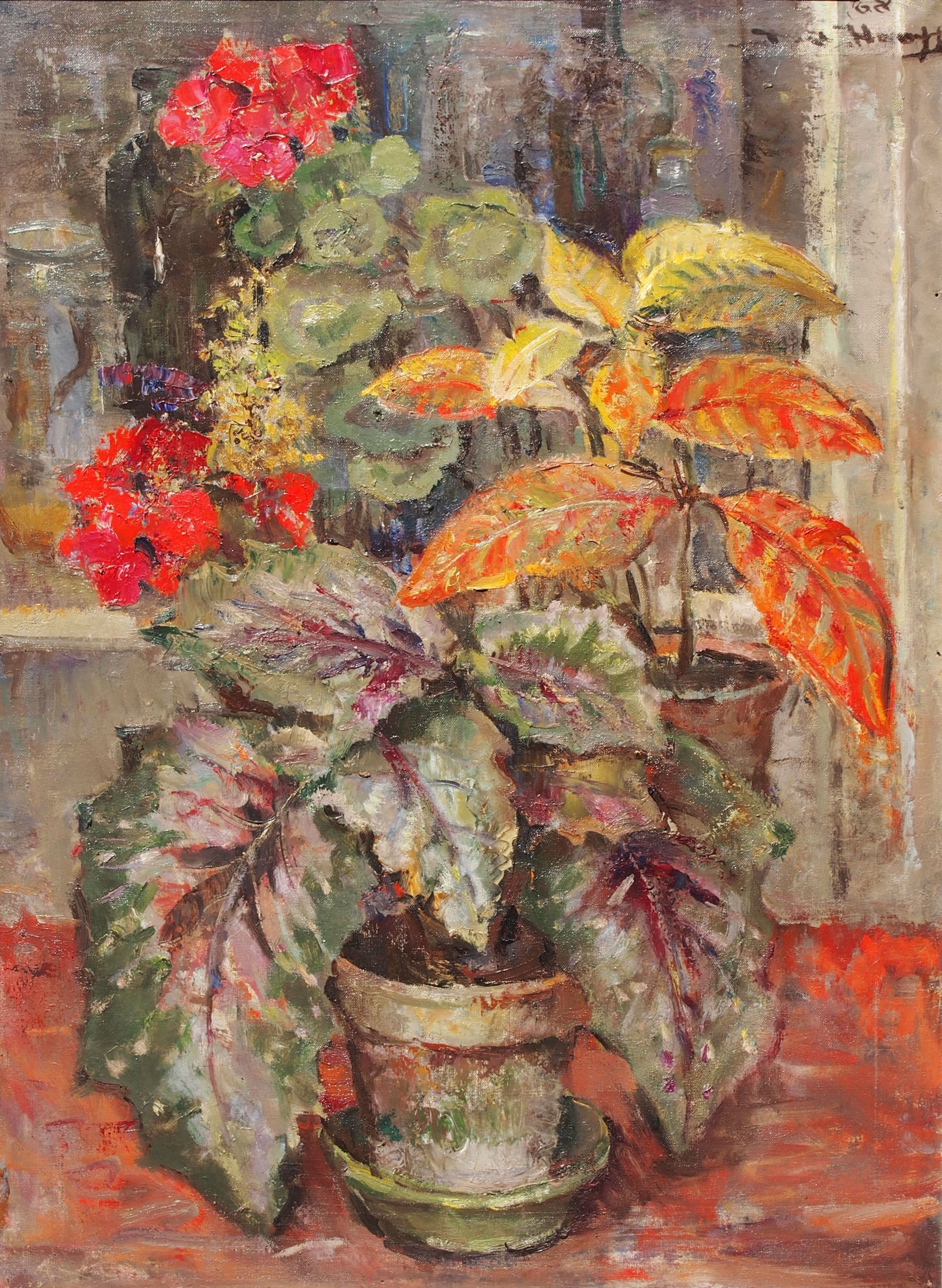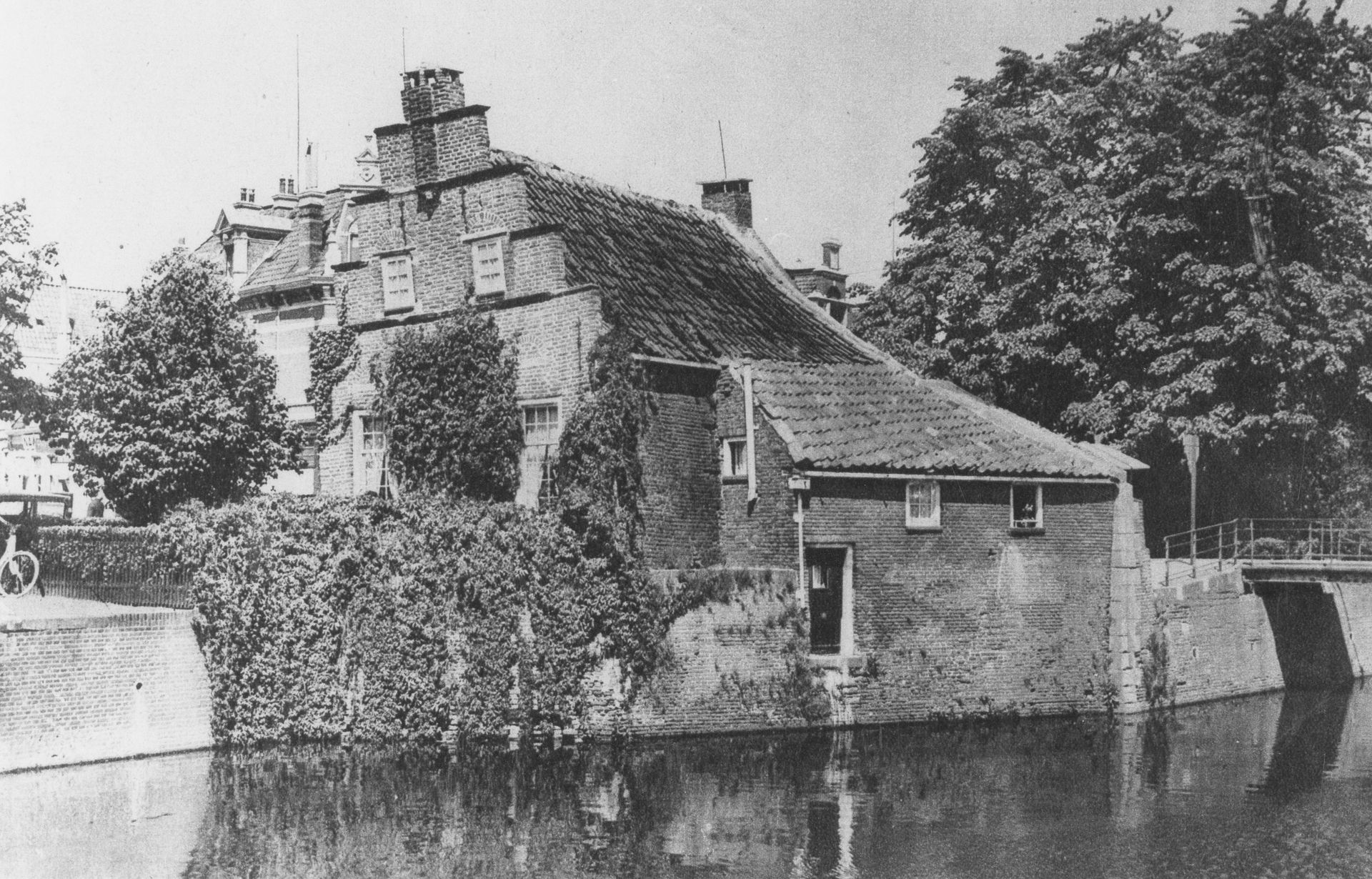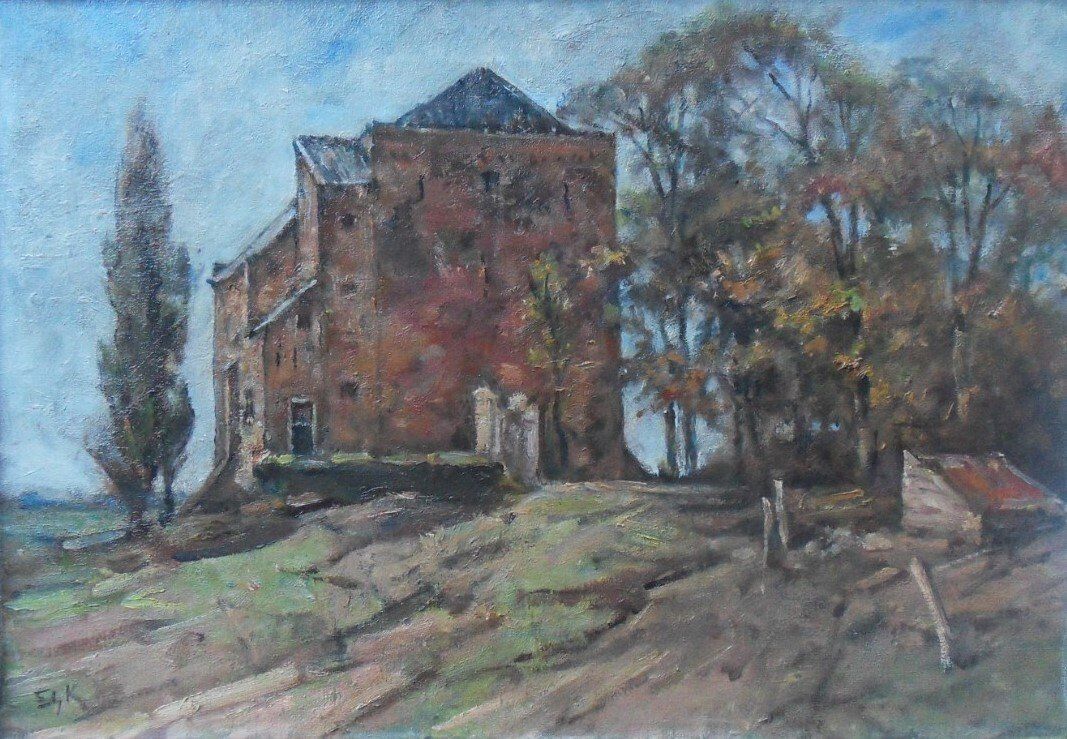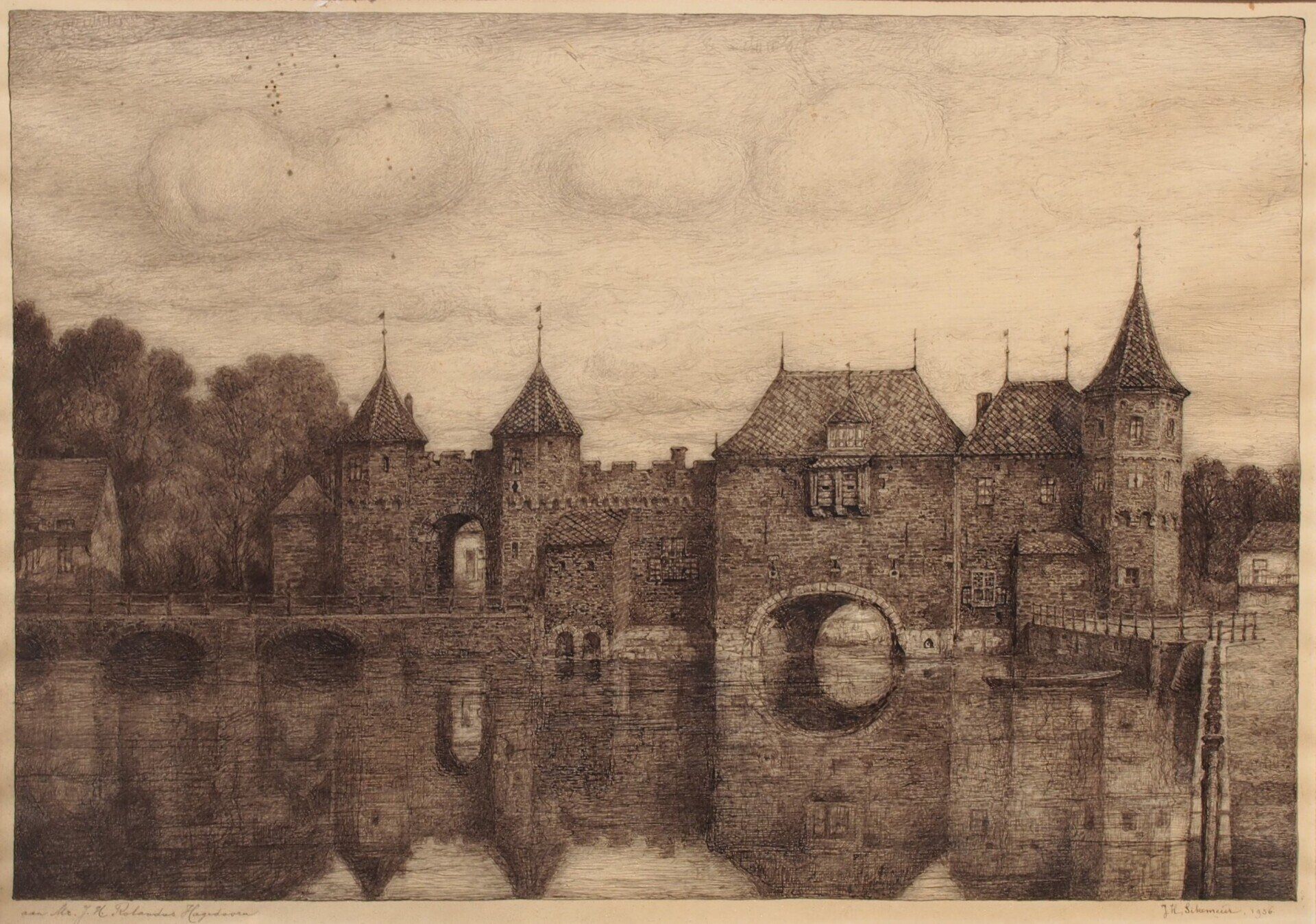Ina Hooft (1894-1994): A Quiet Force in Neo-Realism
Born on January 17, 1894, in The Hague, last month 130 years ago, Ina Hooft lived through an era of art that spanned the first half of the twentieth century, a period rich in artistic upheavals and innovations. Having passed away in 1994 in the Rosa Spier House in Laren, Hooft dedicated her life to art, despite personal setbacks such as the early loss of her parents and severe injuries to her legs due to a faulty medical treatment.
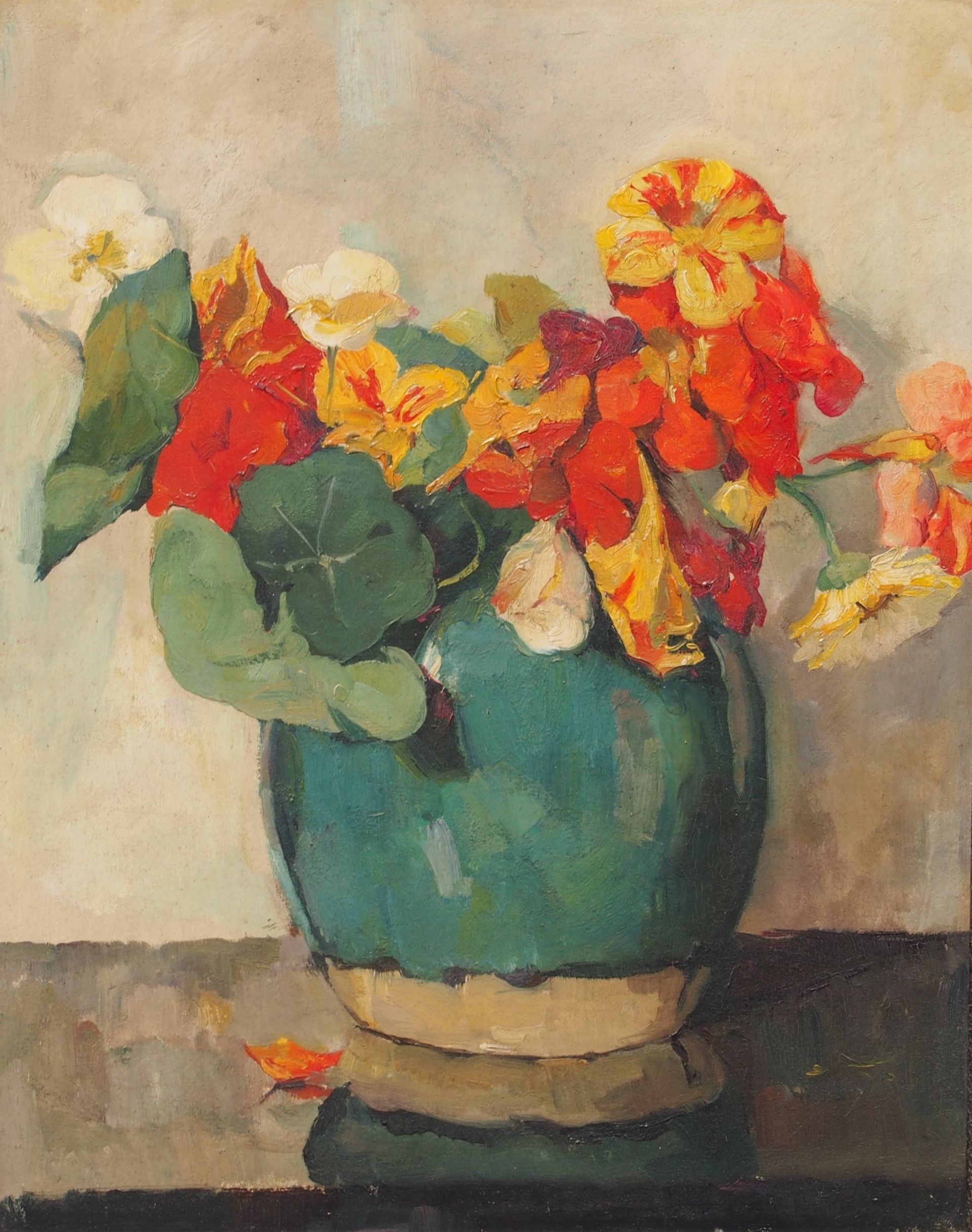
Her education at the Academy of Visual Arts in The Hague and her subsequent training under Floris Arntzenius laid the foundation for her painting career with a completely unique style, best described as impressionistic neo-realism. The purpose of this essay is to highlight the unique contribution of Ina Hooft to Dutch art due to her continuous search for beauty and her ability to transform everyday moments into enduring visual poetry.
Early Career and Development
The 1930s marked a significant period in Hooft's artistic development. Her participation in exhibitions and the reactions from critics, as recorded in the "Telegraaf" on July 6, 1933, show that Hooft's work was recognized early on for its personal approach and refined execution. The portrait of an old lady and her still lifes with plaice and a bottle were praised for their characteristic tenderness and subtle use of colour, positioning her as a talented artist with a voice of her own within the Dutch art guild.
Exhibitions and Further Development
Her first Amsterdam exhibition in 1935, as reported by the "Algemeen Dagblad" on October 30, 1935, illustrated Hooft's dedication to painting with progress that manifested in both theme and technique. Her preference for muted tones and the subtle harmony of colors in her still lifes and portraits reflect a deep understanding of her subjects and materials. Pulchri Studio and the Martinus Liernur art dealership played a crucial role in the career and artistic development of Ina Hooft. These platforms not only offered Hooft exhibition opportunities but also acted as important social and professional networks enabling her to delve into the art community and further develop her own artistic identity. Pulchri Studio, an artists' association with a long history and a deep-rooted place in The Hague art scene, was a place where Hooft regularly exhibited and interacted with her contemporaries. These interactions and exposure to a wide range of artistic styles and philosophies undoubtedly contributed to the evolution of her own work. Martinus Liernur, an art dealership that exhibited her work, played an equally important role in reaching a broader audience and strengthening her reputation as an artist. The exhibitions at Liernur offered Hooft a platform to present and sell her latest works, essential for her professional development and financial stability as an artist. In the late 1930s, Hooft deepened her focus on floral still lifes, a genre where her color sensitivity and pictorial skills fully came into play. The exhibition at Martinus Liernur, documented by "De Avondpost" on October 22, 1937, showcased an artist fully dedicated to capturing the essence and beauty of flowers, a theme that would remain central throughout her career.
Critical Reception and Reflection on Her Work
The critical reception of Hooft's work throughout her life highlights her ability to continually reinvent and develop herself. As described in "Het Vaderland" on October 23, 1937, and confirmed by later reviews, her work shows a continual evolution towards a more expressive and richer execution in color and composition. The still life with White Fruit Bowl on a Table with a Red-white Tea Towel is painted from a unique perspective, but the composition that shows both simplicity and complexity in the arrangements of objects and colours illustrates her skill in creating visual interest and depth with seemingly simple means.
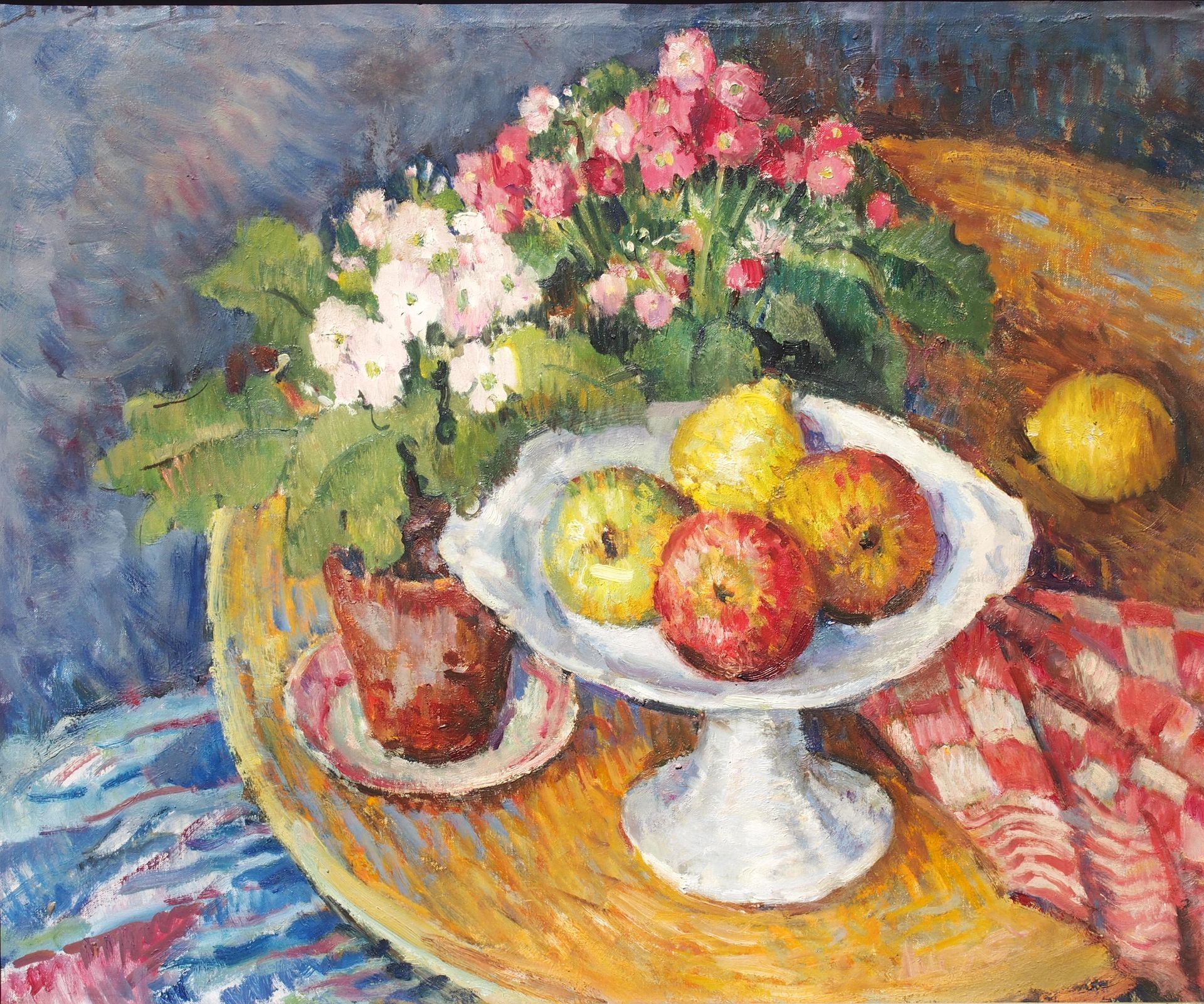
This development is further emphasized by adjustments in her technique and the deepening of themes in her later works, as the exhibitions in the 1940s and 1950s demonstrate.
Impressionistic Influences:
Light and Brushwork Ina Hooft, born in an era when the impressionist movement was still resonating in European art, managed to subtly weave these influences into her own work. Her still lifes and portraits are infused with a sensitivity to light reminiscent of the impressionists, but with a unique application that sets her work apart. Hooft’s approach to light is not just a matter of depiction but also interpretation, using light to enhance the emotional reception of her subjects. Her paintings, portraits, and floral still lifes, show a refined understanding of the nuances of light and shadow. These works illustrate her ability to capture the transparency of light, a hallmark of impressionism. Hooft's use of light goes beyond physical representation; it serves to enliven the texture and material quality of her subjects, from the fragile petals of flowers to the fabric of a garment. In the work ‘Thistles and Shells’, Hooft demonstrates her skill in combining natural elements to create a composition that is both harmonious and dynamic.
The way she sets the roughness of the thistles against the smoothness of the shells illustrates her attention to texture. The subtle color nuances and the way light plays on and around the objects highlight her novel approach to realistic representation, where the recognizability of the subject merges with a free, pictorial conception. Her technical skills and innovations, such as her particular way of using dashes and colors to create texture and depth, deserve further exploration. The way Hooft approaches her subjects, with attention to the individual characteristics of each object or figure, is evident in her brushwork. Her technique, which ranges from fine, precise strokes to freer, more expressive touches, serves to accentuate the texture and form of her subjects. In her floral still lifes, for example, Hooft often uses small, accurate touches to depict the delicate petals of flowers, a method that emphasizes the liveliness and transience of her floral subjects. In the floral still life with a Streptocarpus in a window frame, Ina Hooft illustrates the ability to manipulate light and colour, bringing the texture and form of the flowers and their environment to life. The choice of the window frame as an element in the still lifes adds depth and perspective that gives the viewer the feeling of looking through a window into another world. Her technique here, with fine short brush strokes and attention to shadow and light, emphasizes her impressionistic influences.
Colour Use
The colour use of Ina Hooft is particularly notable for her time. Unlike the sometimes more saturated palettes of her contemporaries, Hooft chose a subtler, more muted colour scheme that lends her work an ethereal quality. Her still lifes show her preference for soft, harmonious colours that together form a visually satisfying composition. These colour combinations are not only aesthetically appealing but also speak to the senses, with each painting evoking its own atmosphere and emotion. A beautifully colourful work is ‘Nasturtium in a Ginger Jar’. This small canvas is particularly illustrative of Hooft's use of colour and form to create a vibrant, almost tangible presence of the subject. The vivid colours of the nasturtium, placed in the more subdued green turquoise ginger jar, create a visually appealing contrast that captures and holds the gaze. Hooft's technique in this painting demonstrates her skill in balancing colour contrasts and dynamically presenting everyday objects.
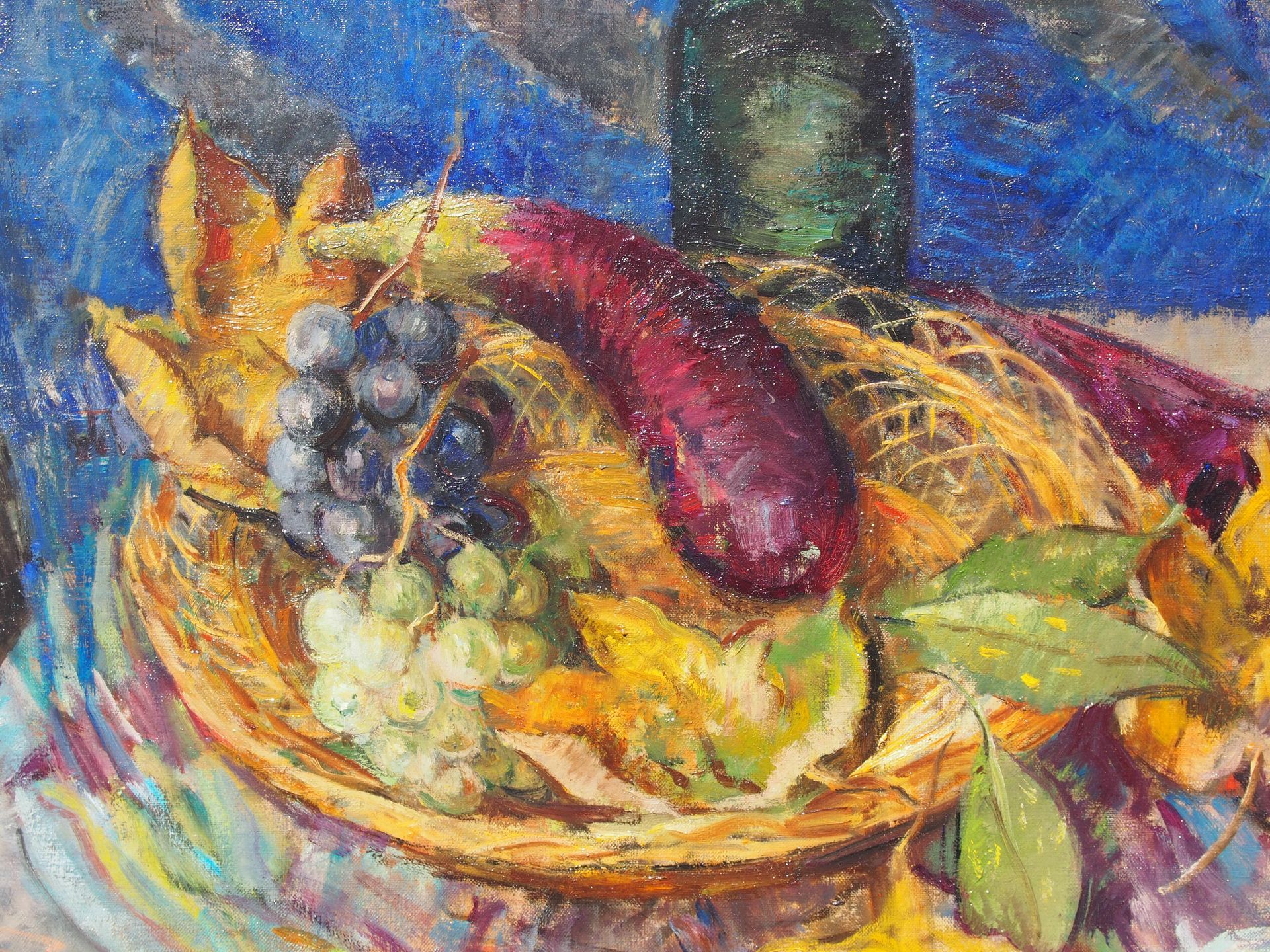
The work ‘Still Life with an Eggplant’ must be seen primarily as a study in colour and light, where the rich, deep shades of the eggplant in a wicker basket with yellow-brown leaves against a blue background complement and enhance each other. Hooft demonstrates her ability to engage in a dialogue with the subject through her painting.
Oeuvre of Ina Hooft
Ina Hooft's oeuvre is a testament to her lifelong dedication to art and her unceasing search for beauty in the everyday. Her works, ranging from intimate portraits to expansive floral still lifes, are imbued with a sense of calm and contemplation, offering a unique perspective within the art of the twentieth century. Through her particular interpretation of light, her subtle and sensitive handling of colour and form, and her distinctive brushwork, compositions are created that invite the viewer to a deeper appreciation of both the natural world and the everyday objects around us. Her ability to capture the essence of her subjects with a subtle, yet penetrating gaze, makes her oeuvre timeless and perpetually relevant. The return in her work, to the recognizable, realistic image, but with a new, fresh approach to painting, that is both timeless and unmistakably of its time, remains a source of inspiration and admiration. It is a reminder of the power of subtle observation and the beauty of the moment, relevant for contemporary art lovers and critics."
www.adelweinkunst.nl February 2024
